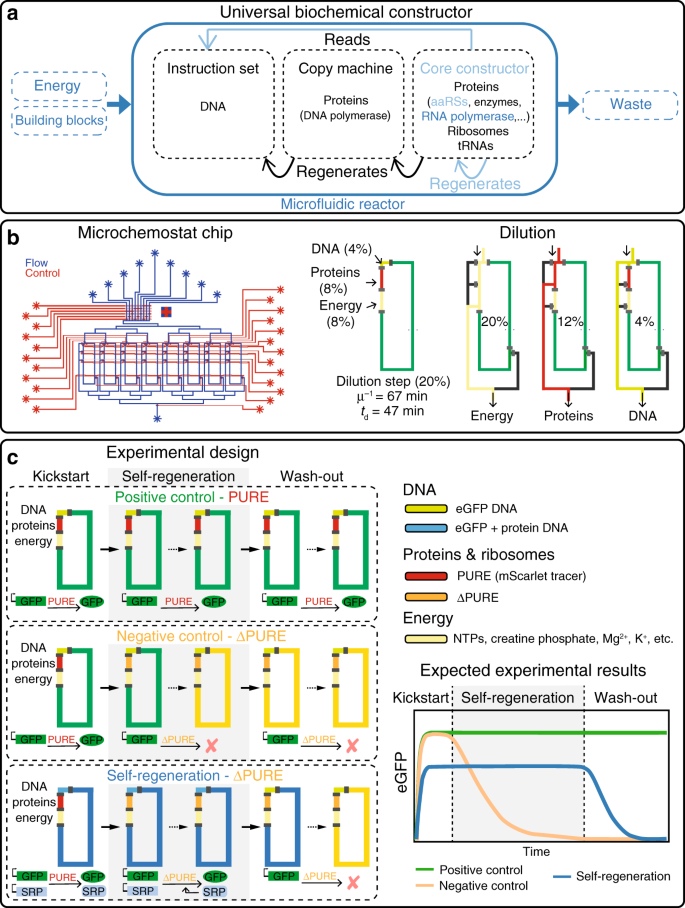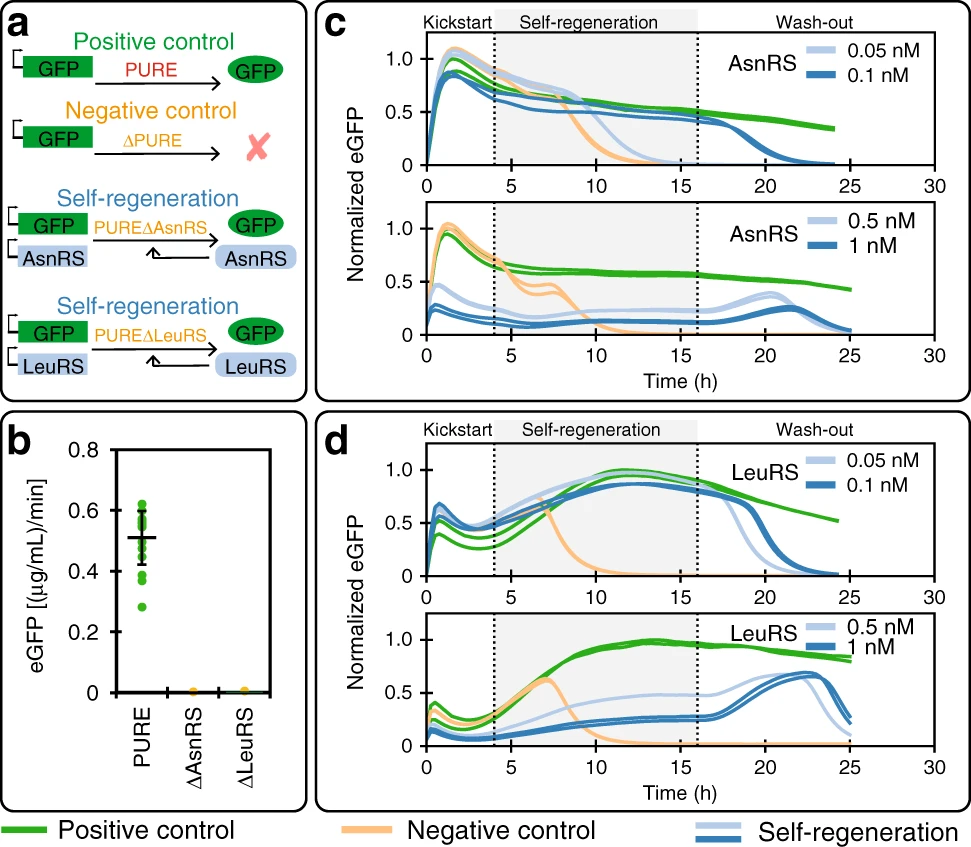A partially self-regeneration synthetic cell
A partially self-regeneration synthetic cell
cite: Lavickova, Barbora, Nadanai Laohakunakorn, and Sebastian J. Maerkl. “A partially self-regenerating synthetic cell.” Nature communications 11.1 (2020): 1-11.
An experiment of self-regeneration in synthetic cell which could sustain synthetic activities over a day by regenerating the important building blocks(protein components).
Fundamental Theory:
Self-replication:
- a set of instruction;
- external building blocks;
- energy
– Von Neuman, 1940
Challenge of transcription-translation system:
- protein synthetic rate must be sufficient to regenerate necessary components;
- compounds should be functional synthesized;
- allows continuous and sustained regeneration
PURE (protein synthesis using recombinant elements) system
- It could synthesize 70% of all E. coli protein
- co-expression of multiple PURE components in single batch
Challenge: - can’t tell which protein is functional or not
Resolution:
employ the experiments of transcription-translation reaction operating inside microfluidic reactor to demonstrate self-regeneration of essential components.
Results
Design
- 8 independent 15 nL chamber reactor, (b);
- replacing 20% of of the reactor volume per 15min;
- replacing ration: energy:protein/ribosome:DNA = 2:2:1;
- 34℃ reaction environment;
- expressed a fluorescent protein(eGFP)
- three steps: kick-start -> self-regeneration -> washout
aaRSs regeneration
A partially self-regeneration synthetic cell
https://karobben.github.io/2020/12/15/LearnNotes/paper_synthetic_cell_regener_1/









